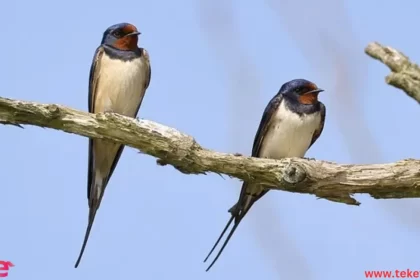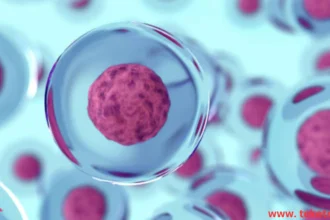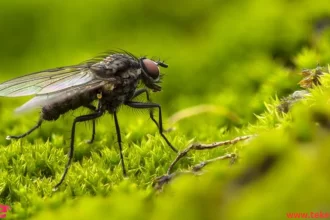The parrot fish is one of the beautiful and colorful fish species that lives in fresh and salt water around the world. Parrot fish are distinguished by their beautiful, bright colors and unique designs, which make them popular with fish enthusiasts. However, it hides some secrets and interesting information that fish lovers would love to know.
The parrot fish is a rare species that has the unique ability to change its color and adapt to its environment.
This adaptation helps them blend in better with their surroundings and avoid potential dangers. The parrot fish also has the ability to make different sounds that it uses to communicate with members of its group and express its feelings.
Despite its beauty and uniqueness, the parrotfish faces numerous challenges in its natural habitat, including habitat degradation and environmental pollution. People must be aware and responsible in preserving these beautiful creatures and preserving their biological diversity to ensure their continued existence in the future. Below, we explore everything related to it on TekeTrek.
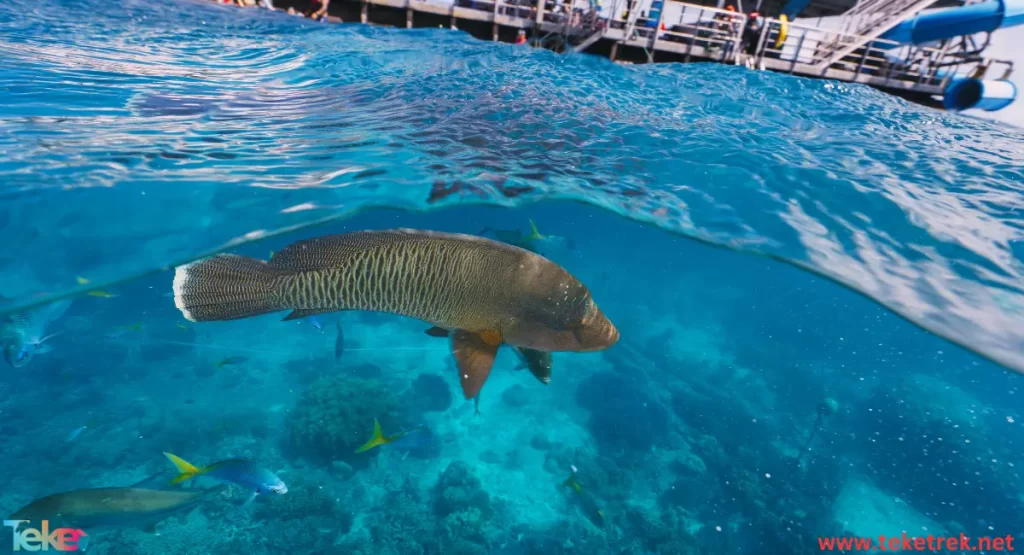
What is a parrot fish?
The parrot fish, parrot fish, haret, or harid, is scientifically called (Scaridae). It is a family of fish consisting of 75 species. These fish live around coral reefs in hot and semi-hot seas. It was given this name because of its front teeth that resemble a parrot’s beak.
The parrot fish belongs to the phylum Chordata, and is a member of the parrotfish family.
The size of the parrot fish ranges between 10 cm and 1.2 metres. Their bodies are covered with large scales, and are distinguished by their bright color. Most of its species also change color during their life.
Types of parrot fish
There are many types of parrot fish and differ only in their colors and sizes, but they share the same characteristics, nature, and food. The most prominent types are:
- Green humpback parrotfish:
- This type is considered the largest in terms of size.
- Length is 51 inches, and weight is approximately 100 lbs.
- Males and females are very similar in appearance and characteristics.
- Its young are colored green or brown spotted with white.
- At adulthood, her head is characterized by the appearance of very small protrusions.
- It is an endangered fish.
2. Blue parrotfish:
- The blue parrot is distinguished by its blue color and the presence of a large yellow dot on its head that disappears when it reaches old age.
- Males are distinguished from females in size, with females being noticeably smaller than males.
- This type of fish is concentrated in the Atlantic Ocean. Numbers of them were found in the Caribbean Sea.
3. Rainbow parrotfish:
- The rainbow parrot weighs about 45 pounds.
- It is approximately 47 inches long.
- It appears as a bright greenish-brown colour.
- Its fins are colored orange or green.
- The area around the teeth is colored green.
- It can be up to 16 years old
- The rainbow parrot is rare, and is classified as almost threatened with extinction.
4. Princess parrotfish:
- This type of parrot fish has several colors.
- Adult fish are colored bluish-green. There are two clear blue or green colored lines at the bottom of the abdomen.
- The tail is characterized by yellow, orange, or pink-red colored lines or dots. In addition to the presence of a stripe in the middle of the body, which is yellow in some of them and orange in others.
5. Parrotfish stop light:
- The stoplight parrot is distinguished by its strange name, due to the presence of a yellow spot on its chest fin, which does not appear until after adulthood.
- This fish is colored red and white, and the two colors change depending on the rapid movement of the scales.
- The parrot fish has a strange habit of secreting an amount of gelatinous mucus during breathing.
- The organ responsible for secreting mucus is located in her head. This mucus is used to create a cocoon-like outer shell as a protector for it, which completely covers its smell
- This fish can hide from the sight of predatory fish such as lemon shark and moray shark, which prey on it.
Food for parrot fish
Parrot fish mostly feed on algae that they carve out of rocks and reefs using their strong teeth. It also feeds on seaweed found around coral reefs. They live in large herds..
The primary habitat of the parrot fish
- The parrot fish is a marine fish that lives mainly in warm waters between coral reefs in the oceans and seas.
- The queen parrotfish lives in the warm parts of the western Atlantic Ocean. They sometimes swim in groups of 3 or 4 female fish and one male.
- At night, many of them form a kind of thin, transparent cover that resembles a cocoon, which they surround themselves with and remain in until daylight shines
- After digesting nutrients, the waste comes out in the form of sand. Each fish can produce 90 kg of sand annually.
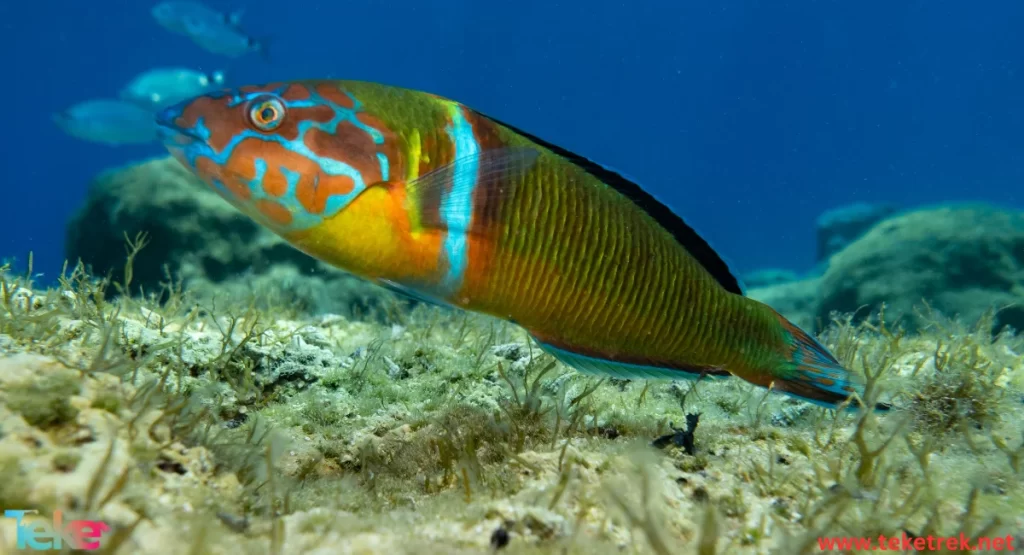
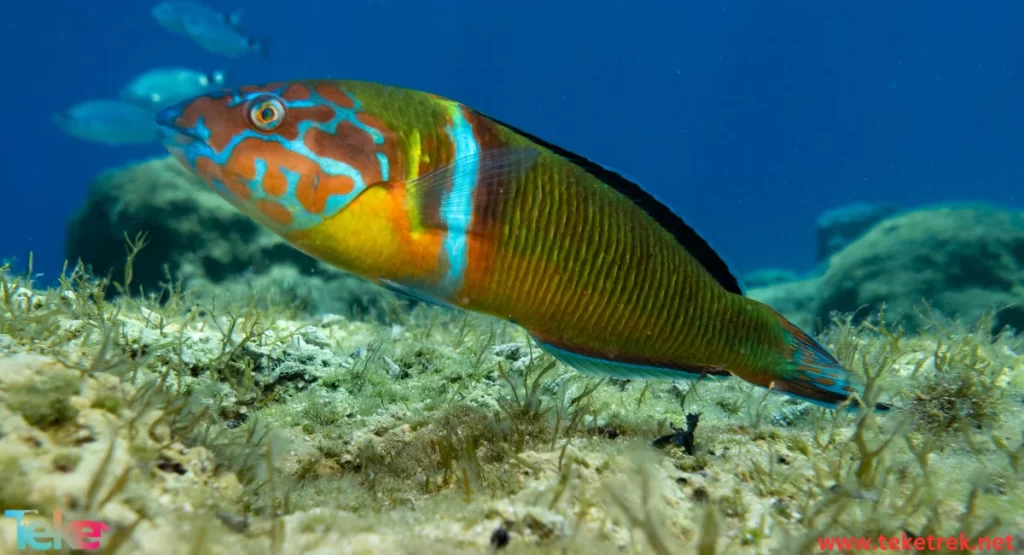
Can this fish be used as food?
Yes, we can say that parrot fish may be used as food in some areas such as Polynesia. Its meat is considered delicious and can be eaten raw. In the past, parrot fish was considered a special dish served only to kings. Although parrot fish meat contains many health benefits such as proteins, vitamin D and Omega 3, it is not popular as a delicacy in America.
If you want to try eating parrotfish as food, you should make sure you get it from reliable sources and follow proper food safety guidelines. It is not recommended to eat any unusual type of fish without consulting a doctor or nutritionist.
Frequently asked questions about parrot fish
In this paragraph, we will answer the most important frequently asked questions related to parrot fish, which are:
- Why was the parrot fish given this name?
The parrot fish was given this name because of its front teeth that resemble a parrot’s beak.
- What do parrot fish eat?
Parrot fish prefer hair algae.
- Can parrot fish be eaten?
Yes, parrot fish is very beneficial for heart health, as it is rich in Omega 3.
- How do parrot fish taste?
flavor was very mild and buttery.
- How long do parrotfish live?
they all generally live about 5-7 year.
In short, the parrot fish is a unique and beautiful creature that deserves attention and preservation. The diversity of their colors and ability to adapt to the environment make them a wonderful example of the greatness of God’s creation and the complexities of marine life. So, let us be aware and concerned about protecting this magnificent creature and preserving its beauty and diversity so that it continues to enrich our world with its colorful beauty and unique charm.



